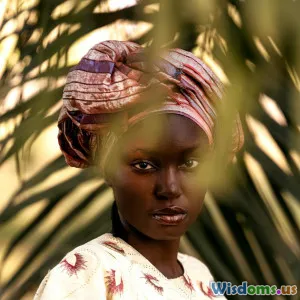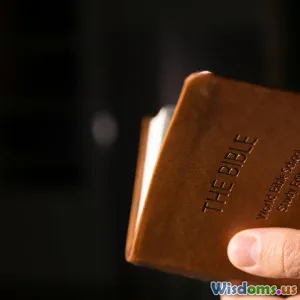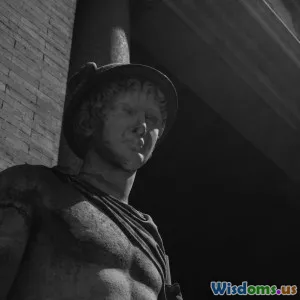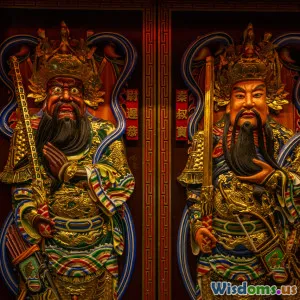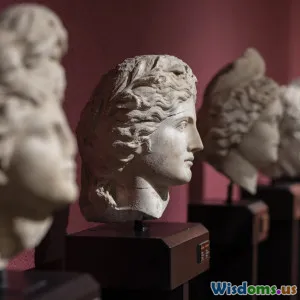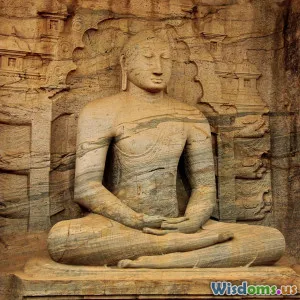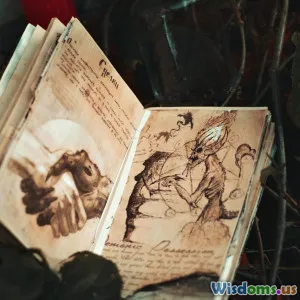
The Influence of Mythology on Art and Literature
7 min read Explore how mythology shapes art and literature, inspiring timeless themes and iconic creations across cultures. (0 Reviews)
The Influence of Mythology on Art and Literature
Introduction: A Timeless Source of Inspiration
From the timeless tales of gods and heroes to the tragic fates of mortals entwined in cosmic dramas, mythology has perennially fueled human creativity. Imagine a world devoid of ancient myths—the tales that have shaped civilizations, inspired artists, and molded literary traditions. Mythology’s profound influence pervades both art and literature, serving as a foundational wellspring of symbols, archetypes, and narratives that continue to resonate globally. This article explores how mythology has influenced artistic and literary expression, tracing its imprint from ancient works to contemporary compositions.
The Role of Mythology in Artistic Expression
Visual Storytelling Through Mythological Motifs
Visual artists have long mined mythology for thematic material and symbolic motifs. Ancient frescoes in Pompeii capture scenes from the Greek epics, immortalizing momentous acts like the wrath of Achilles. Similarly, the Renaissance witnessed an artistic revival of classical mythology, as painters like Botticelli and Titian reimagined these narratives with vivid realism. Botticelli's "The Birth of Venus" (c. 1486) not only portrays the Roman goddess of love but also embodies the era’s idealization of beauty and humanism. The mythic subject presented an opportunity to explore human emotions, divine interaction, and philosophical ideals through a captivating visual medium.
Architecture and Myth: Embodied Narratives
Architectural structures often incorporated mythological symbols to convey power, spirituality, and cultural identity. Temples like the Parthenon in Athens honored Athena and depicted stories carved into friezes and pediments, blending myth with civic identity. In modern architecture, mythological references provide context and narrative depth; for example, Art Nouveau movement designers frequently used mythic female figures representing nature and fertility.
Mythology in Contemporary Art
In contemporary art, mythology continues to inspire reinterpretations and critiques. Salvador Dalí’s surrealist paintings meld classical mythological imagery with modern psychological insight, reflecting on human subconscious and existential anxieties. Likewise, artists like Kehinde Wiley recontextualize mythic iconography by portraying contemporary Black subjects in traditionally mythic poses, challenging cultural narratives and offering fresh perspectives.
The Enduring Influence of Mythology in Literature
Myth as Universal Narrative Framework
Mythology provides writers with archetypal stories and character patterns essential to narrative structure. Joseph Campbell’s concept of the "Hero’s Journey," extensively derived from mythological texts, exemplifies this influence. From Homer’s Odysseus to J.K. Rowling’s Harry Potter, many protagonists embark on transformative quests rooted in mythic tradition. These universal narratives explore themes of identity, sacrifice, and redemption, resonating across cultures and epochs.
Mythology in Classical and Modern Literature
Classic literature is rich with direct references to mythology. Shakespeare’s plays abound with classical allusions; for instance, in "A Midsummer Night’s Dream," characters like Oberon mirror mythic traits of nature spirits and gods. Later writers such as T.S. Eliot infused their poetry with mythic symbolism—from "The Waste Land"’s mythic fragmentation reflecting cultural disintegration, to Madeline Miller’s "Circe," a novel reinterpreting Homeric myths from a feminist viewpoint.
Mythology as a Tool for Social Commentary
Modern authors often harness mythology to critique social issues, offering deeper layers of meaning. Toni Morrison's works evoke African mythic traditions to address identity and heritage. Similarly, Neil Gaiman draws on Norse myths in "American Gods," weaving ancient deities into the American cultural landscape to explore themes of belief, immigration, and cultural pluralism.
Real-World Insights: Mythology’s Cross-Cultural Resonance
Different cultures’ mythologies—Greek, Norse, Hindu, Egyptian—offer contrasting mythic systems that continue to inspire art and literature worldwide. For example:
- In Japanese art, Shinto myths produce rich iconography such as in Ukiyo-e prints depicting kami (spirits).
- Indian epics like the ‘‘Mahabharata’’ inform classical dance, poetry, and film.
Contemporary media franchises, including Marvel and DC Comics, incorporate mythological elements, illustrating mythology’s evolving role in popular culture. Thor, a Norse god reimagined as a superhero, bridges ancient tales and present-day storytelling.
Conclusion: Mythology as a Living Legacy
Mythology is far from a mere relic of ancient thought; it is a living tapestry that continuously informs and shapes artistic and literary creation. By offering timeless themes, symbolic richness, and narrative structures, mythology enables creators to explore facets of human experience—hope, fear, love, and conflict—with enduring vitality. Recognizing mythology’s influence offers not only a gateway to appreciating historical works but also a lens through which to understand contemporary culture. As a dynamic force, mythology invites all of us to see art and literature not merely as entertainment, but as conversations with the deep human psyche across time.
“Mythology has a way of shaping what we create with a power beyond the constraints of history or fact — it speaks to something universal and eternal in us all.”
— Inspired by Joseph Campbell
References:
- Campbell, Joseph. The Hero with a Thousand Faces, 1949.
- Bulfinch, Thomas. Bulfinch's Mythology, 1855.
- Stevenson, Gregory M. "Myth in Art & Popular Culture." Art Journal, vol. 59, no. 3, 2000.
- Miller, Madeline. Circe, 2018.
- Gaiman, Neil. American Gods, 2001.
- Encyclopaedia Britannica entries on Parthenon, Botticelli, and Art Nouveau.
Rate the Post
User Reviews
Popular Posts












